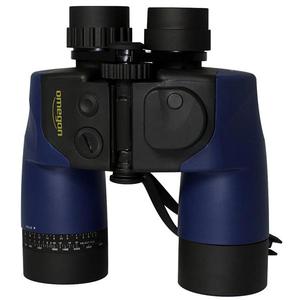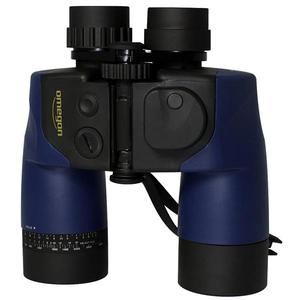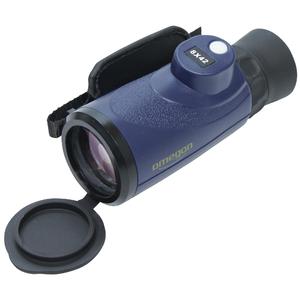Omegon Seastar 7x50: marine binoculars for everyone
Sailing binoculars are very popular and, with their 50mm aperture and 7 times magnification, they are also of interest to nature watchers and outdoor fans.
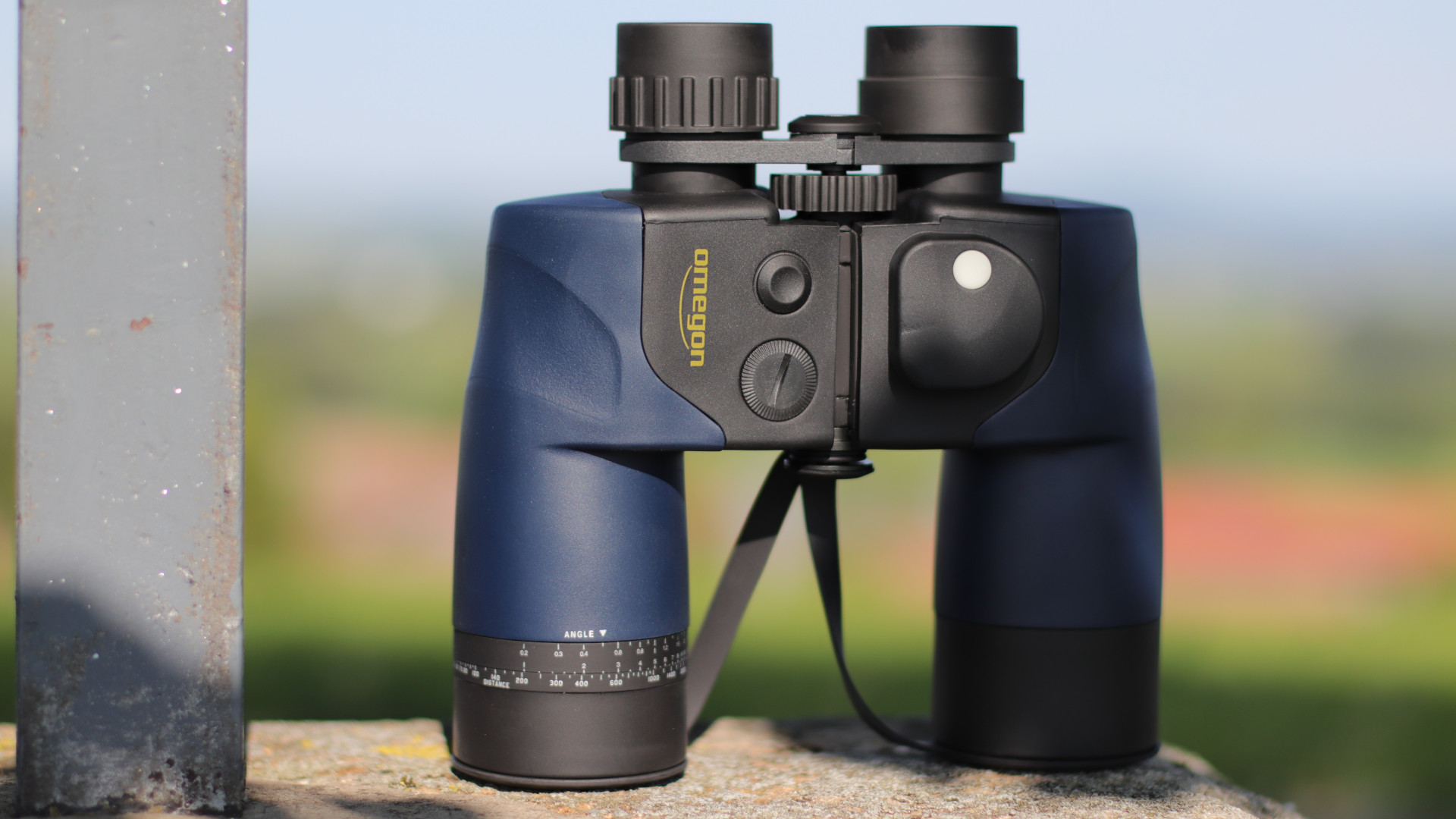
Sailing binoculars are popular because a 50mm aperture and 7-times magnification is not only of interest to the sailor. Many nature watchers and outdoor fans also swear by this format.
Sailing binoculars enjoy great popularity because, with their 50mm aperture and 7-times magnification, they are not only of interest to the sailor. Many nature watchers and outdoor fans also swear by this format. With a 7mm exit pupil, these binoculars provide the observer with bright images. And who doesn't want to have the ability to observe in twilight or in poor light conditions? With the Omegon Seastar 7x50 binoculars you get a decent pair of binoculars at a reasonable price. Reason enough for our customer Phillipe Ledermann to take a closer look at this model...
Seastar 1
The features
If you are looking for decent fully equipped 7x50 marine binoculars for a maximum of €150, you won’t find a great deal of choice. Apart from a few unfamiliar brands, I only know of the Bresser Nautic, the Praktika Marine, the Tasco Offshore and the Omegon Seastar 7x50.
They are usually sold complete with a carrying case, carrying strap, lens covers and a swimming belt.
In addition, these rubber-coated binoculars are fully equipped with the following: an illuminated compass, a reticle with horizontal and vertical fine scale, a reckoning ring for determining distances, a tripod connection and, last but not least, reasonable optical quality: something you cannot always take for granted at this price.
It weighs around 1 kg when attached to a swimming belt ready for operation, which is significantly lighter than the Steiner Navigator (approx. 1.35kg).
Focusing is not independent for each eyepiece as is usual with Seastar 7x50 binoculars, but in the classic way, i.e. centrally using a focus wheel, with dioptre adjustment on the right eyepiece. Focussing is the conventional so-called open focus, i.e. both eyepieces slide open along guide tubes, as in the Nikon Ocean Pro.
The integrated compass
The analogue compass sits unobtrusively on the left tube. The scale is accurate. The scale has 1 degree graduations, with digits marking every 10 degrees. Lines and digits are thick but not too bold, the distance between the lines allows accurate readings of up to 0.5 degrees. Like all analogue compasses, the vertical operating range (tilt) is approximately -5° to +10°.
The compass is neatly built-in, does not need much light during the day, the display is sufficiently bright and when the pupil is positioned correctly, easy to read, the brightness is evenly distributed. It’s easiest to read when the binoculars are raised slightly upwards, by around 3 degrees.
The compass is illuminated red at the touch of a button as required (e.g. at night).
The illumination requires 2 x LR43 / 1.5V batteries. The red illumination is very bright, dispersing slightly in the lower section of the centre of the field of view.
For fast horizontal panning, e.g. by 120 degrees, the compass shows medium to low inertia. It fluctuates by up to 10-15°, and comes to rest within 2 seconds. The accuracy is 0 to 3 degrees, depending on the tilt.
The reticle
The reticle has 14 vertical and 16 horizontal divisions, all labelled, very fine, easy to read throughout the entire range when the background is bright. The reckoning ring runs smoothly enough.
The swimming test
I did a careful washbasin test. The binoculars actually float, even without the swimming belt. After a brief immersion in just 10cm of water (for less than a minute), the optics and compass remained dry, and there was no noticeable fogging of the lenses, even after using a hair dryer on them.
Seastar 2
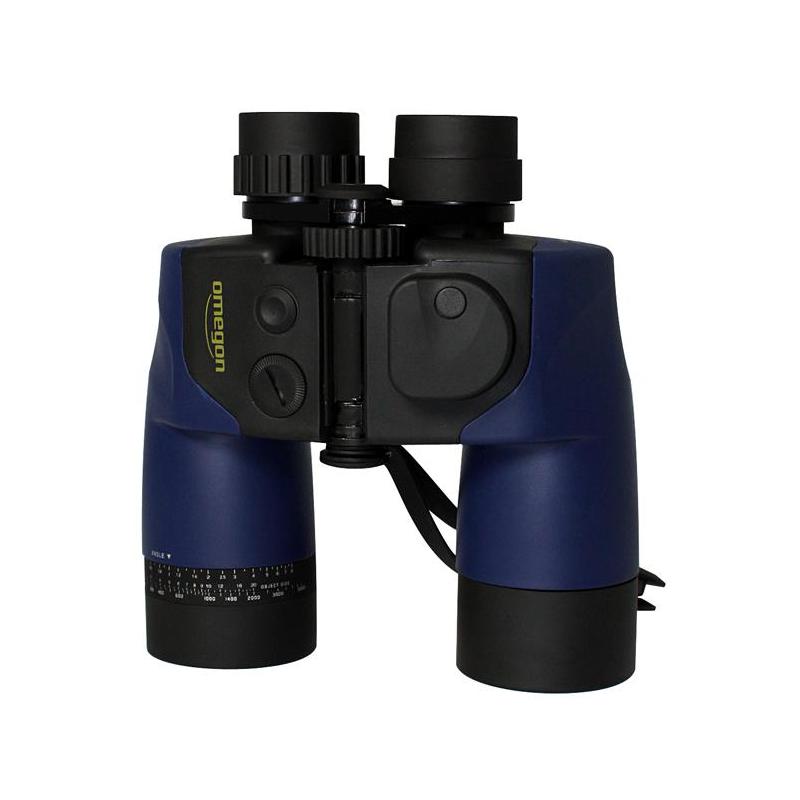
Optical performance
Resolution, edge sharpness, depth of field:
I must confess that I am already impressed by the the sharpness of the Omegon Seastar’s optics, especially given the price.
To illustrate this, I was able to
- Identify the wings and legs of a fly from a distance of 15m
- Absolutely precisely make out single pine needles against a bright sky from a distance of 70m
- See the pattern on roof tiles, with and without moss covering, from a distance of 120m
- Observe individual leaves on trees 200m to 400m distant
All this was possible without having to guess anything, not just in daylight, but also around 20 minutes after sunset (in July).
The most amazing thing was that, for the range from 50m to almost 300 meters, I didn't have to adjust anything at all. Only at 400m did I need to adjust the focusing wheel one rotation to get more sharpness for an optimal image.
The edge sharpness (considering both eyepieces together) is between 60% and 80%. I would describe it as follows (in relation to the radius): top 70%, left 80%, right 60%, bottom 70% (left eyepiece up to the compass, right eyepiece slightly less). It is important that the decline in sharpness at the edges is only very gradual and therefore cannot be perceived at all when observing.
At night, stars are clearly resolved as points, very bright stars are almost without a halo effect, the colour differentiation between blue superstars and red giants is also clear to see.
Contrast, brilliance and brightness
When observing the Moon, areas of brightness and darkness such as craters and mountains on the edge of the lunar disc appear in 3D, and are clearly visible without extra effort and despite the low magnification. I tried hard to detect colour distortion at the edges but found virtually none.
To test the contrast in daylight, I observed a silver wire mesh in the shade against an similarly coloured background (grey with silver shading) from a distance of around 50 metres. To the naked eye nothing was visible.
The Omegon Seastar 7x50 provided excellent results. Almost all the extremely thin wire fence mesh was visible.
20 minutes after sunset the detection rate was around 75%, 30 minutes after sunset around 50%. At this point, in declining light, fine details such as the moss on grey fence posts were no longer recognisable. For everything else, however, colour nuances are still visible. Grey tones don’t dominate until around 45 minutes after sunset. Red tones shift towards brown, green nuances only disappear completely around 60 minutes after sunset.
I wondered how much contrast these inexpensive binoculars could deliver 45 minutes after sunset. In the case of vegetation, there are still a few thousand shades of green-grey visible, while the eye can only recognise a few hundred. Subjectively, I would say that the performance is, at most, just 10% less than the 10 times more expensive ZEISS Victory 8x56. In a direct comparison, the two binoculars differ much more in the brightness and width of the field of view (the ZEISS delivers a unique, generous panoramic image).
It is only 45 to 60 minutes after sunset that the super-expensive high-end binoculars’ lead becomes ever harder to ignore, and things don’t look so good for the Omegon. But until then, it puts up a very valiant fight, especially given its price.
During the day, any colour rendering differences are practically invisible. The Omegon delivers strong, bright and yet nuanced colours across the entire spectrum. This brilliance in combination with the excellent sharpness results in a very generous, uniformly bright and pleasant image with a real 3D effect.
Only the width of the field of view could be more generous. It is, however, sufficient to avoid any tunnel effect.
Geometric distortion
Like any binoculars, the Omegon is not completely defect-free when viewing horizontal and vertical lines, especially at the edge of the field of view. This is noticeable in that roof lines, for example, are bent slightly upwards at the edge of the field of view in the upper part of the image, and bent slightly downwards in the lower edges of the image. You will also detect this warping or “cushion effect” when making certain panning movements.
However, the implication of this in practice is different to the theory, because at sea the horizon and the observed objects are generally in an area of the image that is both very sharp and free from distortion.
This is not really an issue on inland waters or on land, unless you repeatedly pan the binoculars back and forth very quickly - not something you would do under normal conditions.
The Omegon Seastar resolves this issue quite well, because this effect is only detectable at the very edge of the field of view, and the distortion is anyway relatively low.
Viewing position:
The Omegon Seastar has very generous-sized eyepiece lenses with dioptre adjustment, which I would guess to be around +/- 3 dioptres. With –3.5, I found the binoculars just about usable. That's only an average. I measured the maximum interocular distance to be 72mm.
Nothing was noticeable on the right eyepiece.
But the left eyepiece is more sensitive to the position of the pupil, which needs to be well centred. If this shifts a few mm too much to the left, a false image appears in the lower right corner.
Even when perfectly positioned, the black border appears somewhat unclear. The inner surfaces of the barrels are completely and correctly black-coated to avoid reflection.
To achieve good results you need to accurately adjust the interocular distance and the dioptre, and hold the correct distance between the pupil and the eyepiece. You should take some time to find the optimum setting and remember or mark the values. This saves valuable time the next time you use the binoculars.
Since I wear spectacles, I found the folding eyecups very useful. Thanks to the very large eyepiece lenses, the field of view limitation is minimal. Without spectacles, I think the viewing position is even better with the eyecups folded up, because the image appears to surround the observer more, and the narrow view is better. The risk of shadows due to the eye being too close increases slightly.
The alignment is obviously so good that both eyes immediately pass on clear and coherent optical information to the brain. No time is lost making laborious adjustments. The instant the pupils near the eyepieces there is an immediate, absolutely clear, precise and brilliant picture.
If the binoculars are correctly adjusted, you can effortlessly and comfortably observe for long periods of time.
Handling
On the one hand, longer observations are less strenuous due to the relatively low weight, on the other hand, the binoculars are sufficiently heavy to have enough inertia when on the move on water.
The long design of the binoculars means that they are top-heavy. Since you hold the binoculars quite close to the eyepiece, you need to support the nose slightly with your wrists. If you position your hands further forwards to balance this, you can no longer reach the illumination button. This is very smooth and the image doesn't shake when you press it.
The rubber armouring appears smooth, but provides excellent grip. The index fingers rest on a broad, textured area. There are no thumb rests on the underside, but you don't miss them either.
The rubber eye cups are high-quality, soft and supple. They can be easily folded over for spectacles wearers or for cleaning the lenses. Dust and lint like to stick to the silicone rubber despite its smooth surface.
The swimming belt has 4 soft floating sections and is therefore more comfortable and supple than the usual belts. The fabric is coarse, but very soft. This significantly reduces the risk of skin irritation from a combination of sunburn and salt water. The belt looks inexpensive, but is robust and very practical.
The 35mm rubber focusing wheel provides plenty of grip. It turns through 1 1/2 turns for focusing. The new binoculars obviously still have to be run in: even at 22°C, it creaks a little and you can hear the worm screw drawing and distributing the bearing grease, but this lessens over time. The drive wheel is medium-soft and smooth, and it has no play.
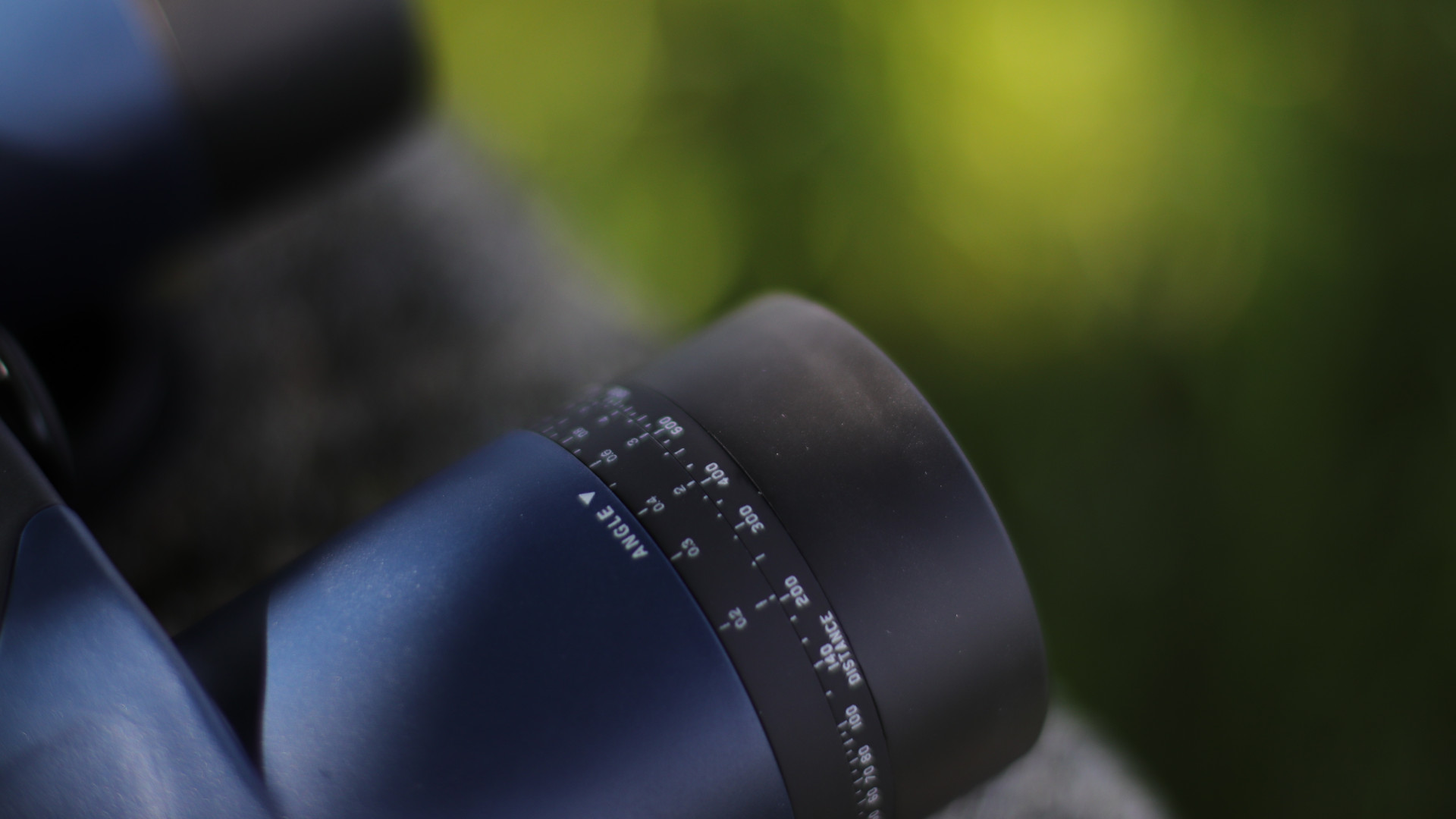
The close range starts at around 5 metres, but due to a double-image effect the binoculars are best used from around 15 metres. From that point on, there is a 3/4-turn available for focusing to infinity. Focusing is very easy and precise, because the gear ratio is correct and above all because the focusing wheel is so generously sized that it can be operated precisely without any effort. In addition, the huge depth of field does not place great demands on focusing.
The very classic, open focus also works very well: the eyepieces are precisely driven along the guide bushes on metal supports, without the slightest risk of slipping.
The dioptre adjustment is moderately stiff and perfect. The central axis for adjusting the interocular distance distance is heavy, as it should be, and is wonderfully smooth: an indication of precise manufacturing tolerances.
In summary
All the Omegon Seastar features work pleasantly, unobtrusively, and exactly as one would expect from quality binoculars. It’s easy to operate, and observing is also relaxed because both eyes are provided with good, clear and coherent visual information. It does not have to be continually and laboriously adjusted, and the image it delivers is clear.
Value for money
Obviously a lot has happened in recent years and the Omegon Seastar is proof of that. Even 4 or 5 years ago, low-cost binoculars from Chinese manufacturers typically featured loose eyepieces, play in the drive train, moderate resolution, poor edge sharpness, vignetting, high manufacturing tolerances, abysmal accessories and similar afflictions.
In the meantime, the manufacturing of optical devices seem largely to have been massively upgraded, both mechanically and in terms of personnel, and quality controls have been introduced. This development, together with with the artificially under-valued Chinese currency, clearly has led to a much narrower difference in quality and performance between entry-level and mid-range binoculars. There are, of course, still exceptions.
The saying "you get what you pay for" is of course still valid, but the price range has become much narrower.
The bottom line
For around €150 you get well-equipped marine binoculars with very balanced optics with no weaknesses. The difference between these and much more expensive binoculars lies no longer in the optical performance, but rather in their more restricted field of view and lower light transmission.

